Uncategorized

NASTT turns 25 in 2015! What was happening 25 years ago?
On June 8, 1990, “It’s Garry Shandling’s Show” last aired on Fox-TV.
On June 11, 1990, the United Nations appointed Olivia Newton-John as an environmental ambassador.
Also on June 11, Nolan Ryan pitched his 6th no-hitter beating Oakland, in 9th he retires Ken Phelps, Rickey Henderson & Willie Randolph (all ex Yanks).
Check in every Friday in 2015 when NASTT posts more fun facts about 25 years ago…
Uncategorized
Hydro-Klean announced that it has acquired Infratech. This acquisition allows Hydro-Klean to offer additional specialized trenchless rehabilitation services to municipal clients throughout the Midwest.
Infratech has built a reputation over 20 years for its superior collection system inspection and
restoration services. Additional services include pipeline cleaning and inspection, sealing and structural point repair systems, manhole sealing and rehabilitation, structural, restoration and protective coatings. Infratech’s extensive line of services, products and equipment complement Hydro-Klean’s wide range of municipal and industrial services.
“Infratech has developed a strong reputation for their trenchless rehabilitation services,” said Paul Govoni, vice president of Hydro-Klean. “We strive to provide effective, efficient and safe services to our clients. We know that by bringing together the Infractech team with Hydro-Klean, we will be able to provide even more to customers.”
The Infratech facility will remain in Rogers, Minn. For more information, please visit Hydro-Klean’s website.
Hydro-Klean provides an array of services to industrial and municipal clients throughout the Midwest. It’s headquartered in Des Moines, Iowa, with locations also in North Mankato, Minn., Sioux Falls, S.D. and Watertown, S.D.
Uncategorized
Hobas Pipe USA is supplying CCFRPM pipe to the City and County of Honolulu for the Kaneohe-Kailua Wastewater Conveyance Tunnel project. This gravity sewer tunnel will convey wastewater flows from Kaneohe to Kailua while providing wastewater storage to help prevent overflows, especially during heavy rainfall events. 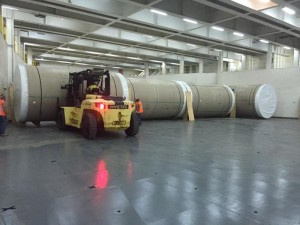 More than 90 percent of the Kaneohe-to-Kailua tunnel will be deeper than 100 feet.
More than 90 percent of the Kaneohe-to-Kailua tunnel will be deeper than 100 feet.
16,000 feet of 120-inch and approximately 2,000 feet of 30- to 96-inch pipe is being manufactured in Houston, Texas and transported by cargo ship to Honolulu. The first shipment included 4,000 feet of the 120-inch pipe. It was loaded onto the 692-foot MV Marjorie C in Galveston, Texas, for the ships maiden voyage. The $200 million project is expected to be completed by June 2018.
Hobas manufactures pipe in sizes from 18 inches to 126 inches in pressure and non-pressure classes. For more information, please contact Hobas at 800-856-7473, 281-821-2200 or e-mail at info@hobaspipe.com. Facts are also available at www.hobaspipe.com.
Uncategorized
Release Date: 06/05/2015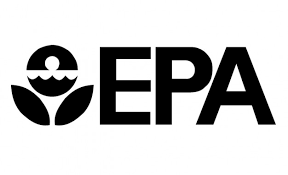
Contact Information: Peter Cassell, 312-886-6234, cassell.peter@epa.gov
EUCLID, OHIO — The U.S. Environmental Protection Agency today announced Great Lakes Restoration Initiative Shoreline Cities grants totaling more than $500,000 to three cities in northern Ohio to fund green infrastructure projects that will improve water quality in Lake Erie. Euclid, Mentor and Sandusky are among 11 cities across the Great Lakes Basin which will receive funding totaling over $1.8 million through the current round of GLRI Shoreline Cities grants.
EPA Region 5 Administrator/Great Lakes National Program Manager Susan Hedman was joined for the announcement at Sims Park in Euclid by U.S. Rep. Marcia Fudge, U.S. Rep. David Joyce, Euclid Mayor Bill Cervenik and representatives from the cities of Mentor and Sandusky.
“These northern Ohio cities will use EPA Great Lakes Restoration Initiative Shoreline Cities grants for green infrastructure projects to protect Lake Erie,” said Hedman. “Green infrastructure captures and filters rain where it falls – to reduce flooding and to prevent stormwater from washing contaminants into our waterways.”
“I commend the U.S. Environmental Protection Agency for recognizing the leadership and commitment of the city of Euclid to invest in green infrastructure,” said U.S. Rep. Marcia Fudge. “These projects and others being awarded Shoreline Cities grants throughout the Great Lakes region demonstrate we are all in this together. Small- and medium-size cities as well as our largest cities along the Great Lakes care about water quality and doing their part to protect this vital natural resource for future generations.”
“The Great Lakes are a national treasure that must be preserved and protected,” said U.S. Rep David Joyce. “I’ve been doing everything I can to fight for this funding in Congress, and I’m proud to see these Great Lakes Restoration Initiative resources coming directly to the shores of Lake Erie.”
“Ohio’s shoreline cities are leading our ongoing efforts to improve the health of Lake Erie,” said U.S. Sen. Sherrod Brown. “This significant investment will allow our shoreline cities to pursue infrastructure that help clean up the lake and protect the water supply.”
“Communities along Lake Erie have unique water infrastructure needs and these resources will help to ensure we maintain a high level of water quality,” said U.S. Sen. Robert Portman. “I’m pleased with this additional support and look forward to working closely with the local communities as we enter the summer months.”
The following projects will be funded by grants announced today:
· Euclid, Ohio,($174,206) will construct rain gardens and bioswales at Sims Park to prevent the discharge of over 500,000 gallons of untreated stormwater into Lake Erie each year. Bioretention ponds and porous concrete will also be installed at a downtown parking lot to prevent the discharge of an additional 88,000 gallons of untreated stormwater into Lake Erie each year.
· Mentor, Ohio,($250,000) will install porous pavement and construct bioswales at the Mentor Lagoons Marina and Nature Preserve to prevent the discharge of about 860,000 gallons of untreated stormwater into Mentor Marsh and Lake Erie each year.
· Sandusky, Ohio,($125,958) will construct bioswales, plant trees and install porous pavement at the downtown Jackson Street parking lot to prevent the discharge of 1.5 million gallons of untreated stormwater into Sandusky Bay each year.
“The improvements at Sims Park are designed to reduce stormwater runoff and non-point pollution on the shoreline, protect the nearshore waters of Lake Erie, and improve water quality,” said Euclid Mayor Bill Cervenik. “This is critical to the success of our long term plan to reconstruct the shoreline and increase public access to Lake Erie, the city’s most valuable natural resource.”
“The City of Sandusky is excited to be the recipient of a Great Lakes Restoration Initiative Grant from the EPA,” said Sandusky City Commission Vice President Dick Brady. “This grant will be used to complete a parking lot in the heart of downtown Sandusky with permeable pavement, rain gardens, trees and storm water management techniques that will significantly reduce the amount of nitrogen, phosphorous and sediment that are contributors to, not only the water quality in the lake and bay, but also the growth of harmful algal blooms that have threatened the drinking water supply in the past few years.”
“This award is a step forward in our work as stewards of the Great Lakes and surrounding watersheds,” said U.S. Rep. Marcy Kaptur. “Investing in Sandusky’s water management infrastructure will help control the flow of pollutants and algal bloom-related nutrients into Lake Erie. As a stalwart supporter of GLRI it is heartening to see the science it advances leading us to a more sustainable and healthy Lake Erie.”
“Maintaining and improving the Mentor Marsh watershed is an important effort for our community, as more than 60 percent of the city’s watershed drains into the lake by way of the Mentor Marsh.” said Mentor City Manager Ken Filipiak. “We are grateful to the US Environmental Protection Agency and the Great Lakes Restoration Initiative for the help that they are providing for this project.”
Great Lakes Shoreline Cities grants fund up to 50 percent of the cost of green infrastructure projects on public property. The projects include rain gardens, bioswales, green roofs, porous pavement, greenways, constructed wetlands, stormwater tree trenches and other green infrastructure measures designed to improve water quality in the Great Lakes basin.
Additional information about the Great Lakes Restoration Initiative and Shoreline Cities Green Infrastructure Grants is available at www.glri.us.
Uncategorized
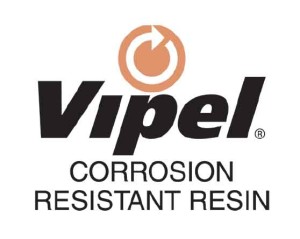
Market Segment: Cured-in-place pipe
Composite Application: Culvert rehabilitation
Resin: Vipel® isophthlalic/unsaturated polyester resin
Pipe Diamter: 60 inches (1,500 mm)
Pipe Length: 147 Feet (45 meters)
Installed: 2015
Location: Puebla, Mexico
In early 2015, a culvert under the surface of the Mexico-Tuxpan Highway near Puebla, Mexico, was nearing collapse. Corrosion from frequent storms led to exposed steel and falling pieces, which posed a risk to the 10,500 vehicles that travel on the highway daily. The federal
organization that oversees transportation, the Caminos y Puentes Federales de Ingresos Servicios Conexos (CAPUFE), turned to Tubepol for an immediate solution.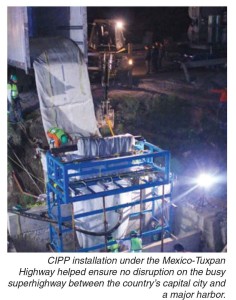
Tubepol, a cured-in-place pipe (CIPP) provider based in Mexico City, designed a trenchless solution using AOC’s Vipel® resin to rehabilitate the pipe. Mexico typically relies on traditional methods, such as open-cut trench excavation. Open-cut pipe replacement wasn’t an option for this project because it would disrupt traffic on the busy 310-kilometer stretch of highway between the capital, Mexico City, and one of the country’s most important harbors, Tuxpan on the Gulf of Mexico.
Cured-in-place pipe rehabilitation was ideal for the Mexico-Tuxpan Highway project. The seamless pipewithin- a-pipe system relied on quality materials, including Vipel® L704-AAP, an isophthalic-based resin that provides the corrosion resistance, durability and toughness required for CIPP applications.
Tubepol and AOC worked hand-in-hand on the CIPP project, the first of its kind in Mexico. “The process was not simple,” says Adrian Cordero, an engineer and head representative of Tubepol. “It took us weeks to plan the perfect and fastest execution without compromising the
security of the highway.”
Designing the CIPP lining presented one of the primary challenges. “We needed a functional tube capable of handling ground loads and settles,” says Engineer Jorge Pérez-Gavilán, Tubepol’s field foreman. The design team opted for a 25 mm liner.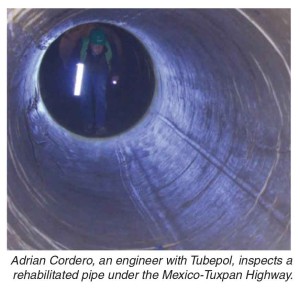
Because of the ground’s pronounced 12.4°slope, Tubepol opted to install the liner cure using compressed air and cure it with steam. Using hot water as the curing mechanism would have been nearly impossible as it would have required a large volume of water, which would have created excessive pressure on the nose of the inverting liner. Steam curing also provided an enormous time advantage: It took only three hours to cure the liner.
Tough conditions prevailed during the installation, including fog, rain and even a flood. But thanks to its excellent wet-out and cure properties, the Vipel® resin behaved as expected. The liner was cured and a temperature of 212° F/100°C resulting in new pipe with improved structural and hydraulic performance.
The success of this project has gained visibility for Tubepol and spread the word throughout Mexico about the benefits of no-dig rehabilitation technologies, such as CIPP.
About Tubepol
Tubepol is a full-service CIPP provider located in Mexico City. It solves customers’ pipeline issues, offering video inspection, pipe fabrication, installation, curing, 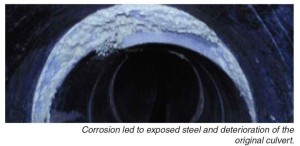 and final inspection. Tubepol also provides free educational seminars on CIPP to maintenance chiefs at government organizations and private companies. For more information, contact Rodrigo Zavala, at (+52) 1209-0152 or email ingenieria@tubepol.com.
and final inspection. Tubepol also provides free educational seminars on CIPP to maintenance chiefs at government organizations and private companies. For more information, contact Rodrigo Zavala, at (+52) 1209-0152 or email ingenieria@tubepol.com.
About AOC
AOC is a leading global supplier of resins, gel coats, colorants, dispersions and synergistic material systems for composites and cast polymers. AOC develops technology, lives quality and delivers service better than any other resin supplier. For more information, visit: www.aoc-resins.com.
Uncategorized
Release Date: 05/20/2015
Contact Information: David Sternberg (215) 814-5548 sternberg.david@epa.gov
(PHILADELPHIA- May 20, 2015)– The U.S. Environmental Protection Agency, the District of Columbia (District) and DC Water today announced an agreement to modify a 2005 federal consent decree (CD) allowing DC Water to incorporate green infrastructure in its long-term strategy for curtailing combined sewer overflows (CSOs).
The modification, filed yesterday in Federal District Court in Washington, D.C., gives DC Water the go-ahead to pursue an integrated green/gray infrastructure approach to address water quality issues in the Rock Creek and Potomac watersheds resulting from combined sewer overflows. This integrated approach utilizes green infrastructure in a targeted and sound engineering manner to reduce combined sewer overflows. Green infrastructure uses vegetation, soils, and natural processes that mimic nature, to soak up and store rainwater water where it falls to control wet weather pollution and create healthier urban environments.
“This modification represents significant efforts by all the parties to make green infrastructure an integral part of the solution to curtailing sewer overflows and protecting urban waters,” said EPA Regional Administrator Shawn M. Garvin. “We expect that the green infrastructure components of this modification will provide a model of sustainability for others to follow.”
“This innovative plan will significantly reduce sewer overflows into our rivers and capture rainwater in the area’s ecologically important watersheds,” said Assistant Attorney General John C. Cruden for the Justice Department’s Environment and Natural Resources Division. “This plan puts Washington, D.C. among America’s green city innovators, and it reflects the Justice Department’s and EPA’s commitment to work with cities to safeguard public health, adapt to climate change, and improve aging sewer infrastructure using smart and environmentally sound solutions.”
The green infrastructure projects in Rock Creek and Potomac watersheds are slated to begin in 2015 and 2016 respectively, providing more immediate pollution reductions, enhancements to community livability, and green jobs opportunities.
Specifically the CD modification includes:
· Using green infrastructure to retain the first 1.2 inches of rainwater on 365 acres in the Rock Creek area, and 133 acres in the Potomac watershed.
· Potentially eliminating the Rock Creek storage tunnel and significantly decreasing the size of the Potomac tunnel depending upon the success demonstrated by green infrastructure.
· The District providing the public space necessary for DC Water to construct the proposed green infrastructure projects, and making changes to District regulations, codes, standards, guidelines and policies needed for implementation.
· Requiring the District and DC Water to work together to coordinate capital projects and expenditures for implementing green infrastructure, enabling the efficient use of resources and minimizing costs to rate-payers and taxpayers.
As part of the agreement, DC Water will have an additional five years to complete implementation in the Potomac and Rock Creek watersheds beyond those provided for in the original 2005 consent decree, which established a compliance schedule to construct tunnels in the Anacostia, Potomac and Rock Creek watersheds. The schedule for completing the Anacostia tunnel remains unchanged.
Under this consent decree, DC Water will continue moving forward under this consent decree on the construction of the overall CSO control project which is known as the Clean Rivers Program. This program involves completion of, besides the components described above, control structures and tunnels for the Anacostia watershed, which contributes more than 65 percent of the sewage discharged to District waters annually. Major portions of this tunnel system are scheduled for completed and in operation in 2018. When the Anacostia tunnel complex is fully completed in 2025, it will nearly eliminate combined sewer overflows to the Anacostia in an average rainfall year.
In November 2011, DC Water proposed to EPA to incorporate green infrastructure into its overflow control strategies for the Potomac and Rock Creek watersheds. As part of the request, DC Water submitted analysis demonstrating that modified CSO controls in the Potomac and green infrastructure in Rock Creek could provide equivalent pollution reductions to those in the original plan and were economically feasible.
In early 2014, after conducting a public participation process, DC Water filed a request to EPA to modify the plan for CSO controls and deadlines set forth in the 2005 CD.
During the CD modification discussions, DC Water has continued to move forward in a timely fashion to enhance its nutrient reduction treatment systems at the Blue Plains Advanced Wastewater Treatment Plant. This is an important element of the Bay watershed restoration effort because the Blue Plains facility is the largest point source of nutrient pollution in the Chesapeake Bay drainage area. The proposed CD modification is subject to a 30-day public comment period once it is published for public notice in the Federal Register, and must be approved by the Court. The proposed CD modification will be available at: http://www.justice.gov/enrd/consent-decrees







